Tea and Sympathy with the Paranormal: An interview with Steampunk Goddess Gail Carriger
Photo by Vanessa Applegate
Gail Carriger has published several series of best-selling and award-winning novels starting with her Parasol Protectorate Series.
Gail, you have developed what the publishing industry considers as a distinctive brand. Not only have you capitalized on the subgenre of Steampunk, but you’ve also added a distinguishing paranormal twist with many of your major characters being Preternaturals, Werewolves or Vampires. What inspired you to carve out this niche for yourself?
From my perspective, I felt that the real momentum of social media happened around 2007. I knew that to be a published author I’d have to choose to have a social media presence. So, I poked my nose about to see what some of my favorite authors were doing — who was doing a good job of it and who wasn’t — and made pretty thoughtful choices form the get-go about everything from how my website was designed as to how I would appear on social media, as well as my public image. That might sound a bit manipulative, but I’m one of those evil authors that are a bit Machiavellian — that all I’m doing as an author is playing with your emotions.
[Click the images for bigger versions.]
Your website says that you draw inspiration from Jane Austin and P.G. Wodehouse. Who are some of the contemporary authors?
I looked at some of the authors that were carving names for themselves as a brand. I consider myself fashion forward and image conscious — to me an “author brand” is just another step as to how I present myself to the world. I looked at authors not necessarily that I wanted to model myself after them but just to see what kind of effects they have on their audience — authors like Neil Gaiman, Chuck Wendig, or John Scalzi who have well known blogs and brands. I like to analyze how they present themselves, and although that’s not necessarily how I’m going to do it I can see the backbone for what works and what doesn’t.
One of the things that is important in social media is to give people back what they got from your books. People read my books, because they want specific things. My books are lighthearted and fun. The readers want to be left smiling. They want a certain type of etiquette and tea and silliness and civility, but also these are things that are interesting to me that I want to explore on a personal level and share with others so I want the brand to reflect that such as my love of historical fashion, my love of tea, and octopuses. I love octopuses.
It sounds like you have a very distinctive fan base as a result of this niche you’ve carved out for yourself.
It’s really funny, because often my fans share all sorts of stuff with me that I don’t always do. Believe it or not many of my fans from Pinterest are into knitting and often I will share a Victorian shawl pattern. I’m such a visual person and collector of information because of my academic background, but for me it’s great for character inspiration boards. Also, the Internet is full of great images from Victorian London, but if I create a Pinterest board it helps me describe it visually as an author rather than having to rely on primary or secondary descriptive sources. Then I can use my character’s point of view to describe what is going on.
I’m assuming that you’re one of those authors that is an outliner. Do you outline?
Oh yes. I’m a very strict outliner. I’ll know that certain things have to occur a certain percentage of the way through the book. I’m way more scientific and mathematical in my approach. It can cause problems at times since I have this super organized brain that tries to wrangle the Muse.
Your publicly posted biographies that you have a Master’s degree in Archeology.
I have two Master’s degrees, actually, and was about three-quarters of the way on the road to my Ph.D. when my book sales did really well, and I had to make the decision between the two career paths. I chose writing. I have a Master’s of Science from Nottingham University dealing with the analysis of artifacts. I also have a specialty in ceramics in the field of archeology.
Photo by J. Daniel Sawyer
Do you think you’ll have a series in the future with a female protagonist doing that British/Victorian/Explorer-thing?
I feel that Elizabeth Peters has already covered that in her Amelia Peabody series. However, archeology does sneak into my books. In Blameless, the third in my Parasol Protectorate series, the characters go to an Etruscan excavation site, and that was actually my first site as an archeologist. Middle Kingdom Egyptian stuff will show up in my books from time to time, since I was a curator for a while in that area.
The next book in my Custard Protocol series will go to Peru where my last excavation was. It does sneak in. One of the pleasures of archeology is that you go and live in a place for quite a bit longer than most tourists do and you get to experience that submersion into the local culture, as well as the history of that place. It’s hard to get the smell and the lighting of a place if you haven’t been there.
I have what I call the ten percent rule. When doing a historical novel you’re going to get something wrong anyway. You’re going to use a word that didn’t exist back then, and one person is going to write you an angry email because that person’s area of expertise is historical medical equipment and you used the word, syringe, two years before it came into existence. This person will represent about ten percent of your readership. Of course, the more popular your books are the more likely that people are going to notice that mistake.
There also comes a point that as an author you have to make your deadline. If you go down a hole every time you have to do research you will drive yourself insane. So you just have to take that risk of offending those people, and I know because I’m one of them.
Your dialogue is so spot-on that I just love reading it and feel like I’m right there in that time period.
Thank you. Dialogue is my favorite thing to write, and I really visualize my characters either talking on stage or on screen to each other. In fact on my first pass my manuscripts tend to be dialogue heavy and then I’ll go back and fill them out with descriptions or narrator voice stuff. As far as influences are concerned, my mother is the narrator — the British voice I hear in my brain. I didn’t have television when I was a kid, so she pretty much raised me speaking stories out loud in her very British accent. Also, I spent a lot of summers in England with my grandparents when I was a kid. I was raised on The Water Babies and The Wind in the Willows — all very British traditional children’s stories. I never lost this.
It shows, because there’s naturalness in your dialogue, and sometimes it’s just a matter of slang.
Or the arrangement of the words. Sometimes it’s a matter of switching the word, “just” for the word, “simply” that will do make it more British rather than American. The purple prose of Victorian literature a challenge, because actual Victorian works are pretty indigestible for most audiences. I have the advantage of writing with a heavy comedic hand, and I will do almost anything to get a laugh out of my readers. To that end, I can be a bit more “purple” than most authors, because I’m describing the most absurd hat you’ve ever heard of. Therefore I can slog through extra adverbs, because the payout at the end of that description will be a laugh. However, I think the temptation is always there to go overboard if you are writing Steampunk or Gaslight Fantasy.
Let’s talk about vintage fashion and your fabulous personal style.
I attribute a lot of that back to my high school days when I got into the Grunge look. You can go thrifting, tear a few things apart and sew them back together and have this super fabulous look. Right around that same time I discovered cosplay, conventions and was a total fan girl. This also ties into the branding side of me, because I was totally one of those wide-eyed sixteen-year-old girls amongst all the guys in the room paying very close attention as to how to write a query letter, but dressed up as a Marvel “baddie” or villain. I was also into historical re-enactments such as our local Renaissance Fair and a Dickens Fair. When I discovered Steampunk, I could combine all this stuff without being so strict and thought, “This is it. This is my universe.”
Gail, I’ve seen you at conventions, and you are unmistakable. You also have this 1950’s style going.
I have a curvy, hourglass figure that works well with the Victorian style and coincidentally always works well with Dior’s New Look of the late forties and early fifties. Having this kind of silhouette is the perfect excuse to incorporate this into my own personal brand. That was really thought out. I wanted something I could wear, and people would always identify me when I’m out in public. When I’m out in public its to meet my readers with an aura of Miss Manners and politeness. I think it adds to my respect as a professional author.
Let’s get to the issue of female protagonists: Your novels and novellas tend to feature primarily strong, and often eccentric female protagonists, of which I’m sure most can agree that there aren’t enough of in speculative fiction. Is there a reason why you’ve chosen to go in this direction?
The answer is simple. That is what I like to read. I like to see a woman strong and in control — in character, physically, morally and ethically strong in every way. I prefer character-driven fiction in whatever form it’s going to take, rather than concept-driven. My main characters are almost always women. I’ve even ventured to include women that weren’t always straight. Although lately I’ve been dabbling in the world of gay and straight men. Maybe I’m becoming comfortable with wider ranges of voices as I’m becoming more experienced as an author, but for the most part I like women in control.
You also have a novella with a widow/assassin.
You’re referring to my book, Poison or Protect. Preshea is one of the bullies or villains from the Finishing School series, but grown up. I also have a main character that is a cross-dressing character in Romancing the Inventor.
I was shocked as to how erotic Soulless ended up but with a restrained and proper portrayal indicative of that time period.
The lovers still stay very Victorian. It remains sexy, but without overt language. It’s gently alluded to, but to be honest the sexy, romantic scenes were the hardest things for me to write well. One thing that’s important to me is to empower female sexuality and female choice and encouraging women to think about what they want and not be embarrassed about it. Therefore, it’s really important for me not to trivialize sexual encounters and make them whole and part of the character, instead.
Alexia, your protagonist of the Parasol Protectorate series, is fairly outspoken sometimes to the point of impropriety.
Exactly and in a lot of ways, and her daughter who is the main character in my new series, The Custard Protocol is even worse.
Have you received any feedback that since you feature such strong female characters that you also have a significant male fan base? I noticed that on your website you have many men attending conventions doing cosplay with your characters.
That is something I never expected, especially if they are straight. I also get a lot of women cross-dressing as the male characters in my novels in cosplay. Getting back to my archeology roots, I love analytics and demographics and data about my readership and run a lot of surveys to find out who my readers are and where are they located. That’s one of my passions. My readership tends to be very social, upbeat and fun. Someone told me once that they loved my book characters because all the women were outrageous and all the men were gentlemen.
When I was doing my first series, the Parasol Protectorate, I could always tell at conventions which fans were lining up for my book signings by the way they dressed, and ninety-eight percent of them were women with a few reluctant husbands or boyfriends that had been dragged along. Slowly over the years I’ve watched that demographic skew over. I keep visualizing these men sitting next to their significant other in bed wondering why she is giggling and carrying on. Finally my books began to gain popularity amongst males. Internationally, I find I have significant numbers of straight male readers.
The Finishing School series was a sea change, and I think it has to do with the fact that they are espionage and spy books. With that I get a cadre of military readers. Believe it or not, I’ve had big, burly Hell’s Angels-type of fans go for it, as well. Possibly this male readership is attracted to the bold, outspoken type of women I write about.
What about LGBQ demographics?
Statistic-wise that’s harder to pinpoint, but since I have many characters like that in my books, it only makes sense that people, especially young people, who identify with those characters will be avid readers. I love it when I can give a reader a role model in a positive way.
You can find more information about Gail Carriger at www.gailcarriger.com. She also has a newsletter, the Monthly Chirrup, you can sign up for.
Elizabeth Crowens is a Hollywood veteran, journalist and author of Silent Meridian, an X Files for the 19th century steampunk novel series, finalist for the 2016 Chanticleer International Awards- Cygnus Awards in Speculative Fiction, the Goethe Award in post-1750’s Historical Fiction, the Paranormal Award and the Ozma Award for Fantasy Fiction. www.elizabethcrowens.com, Facebook: @BooksbyElizabethCrowens, Twitter: @ECrowens
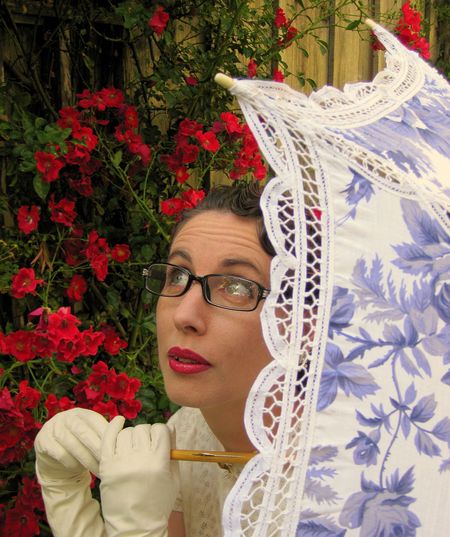
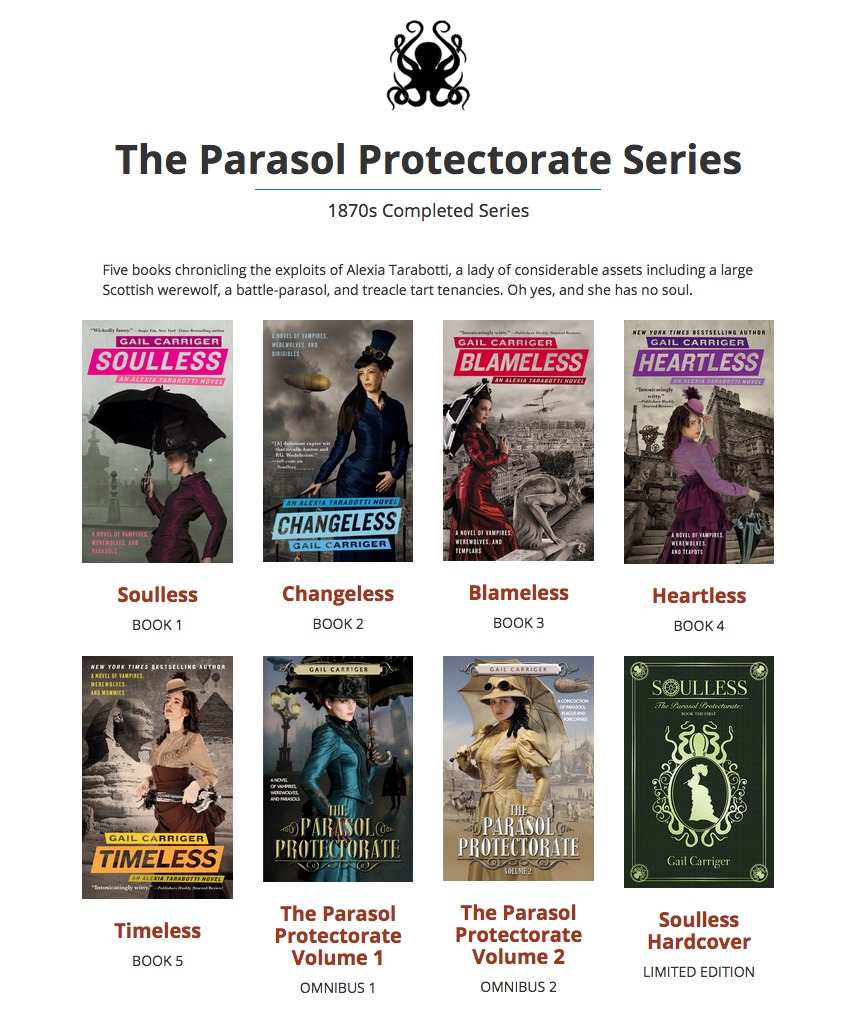
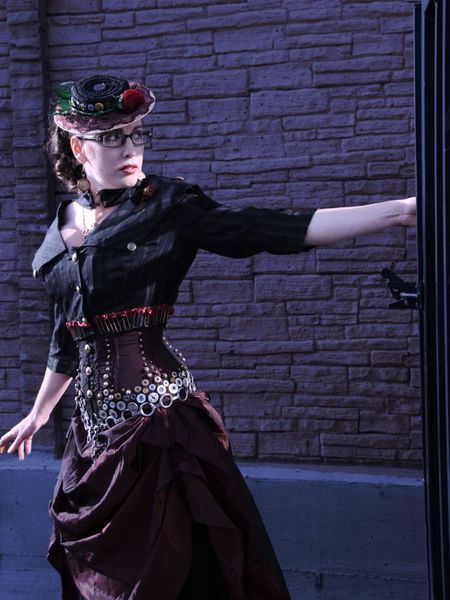
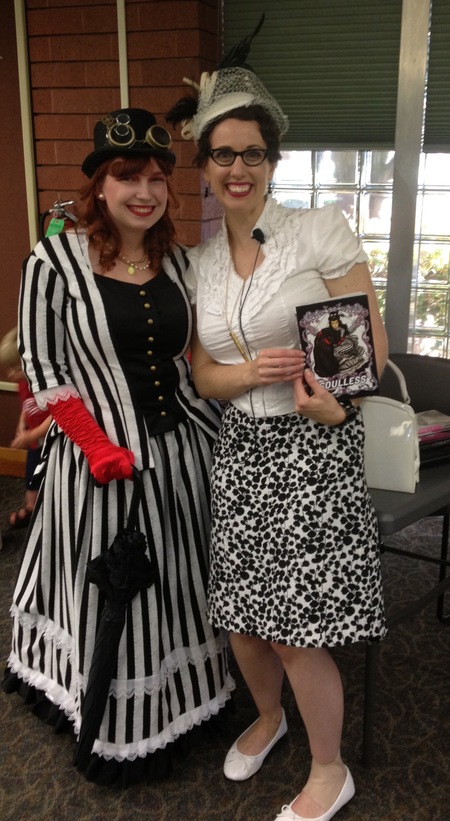
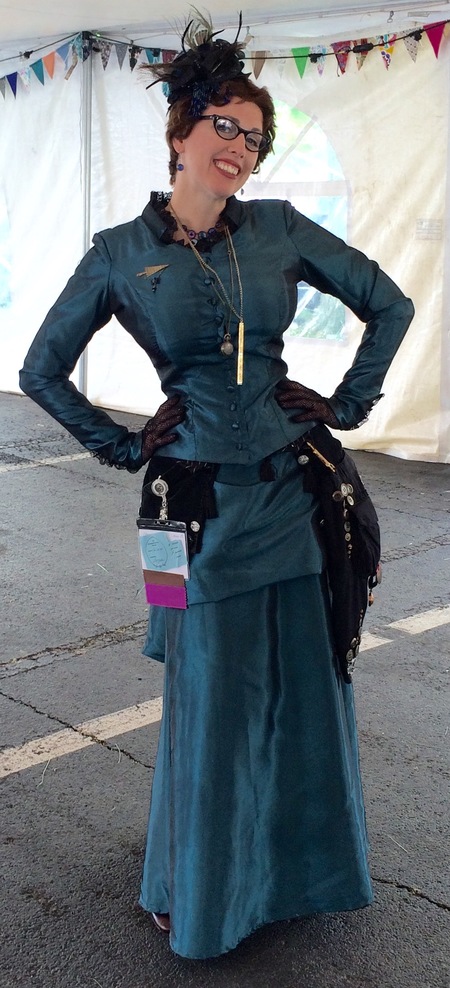
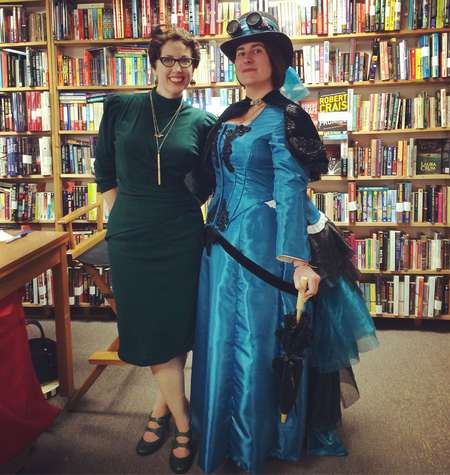
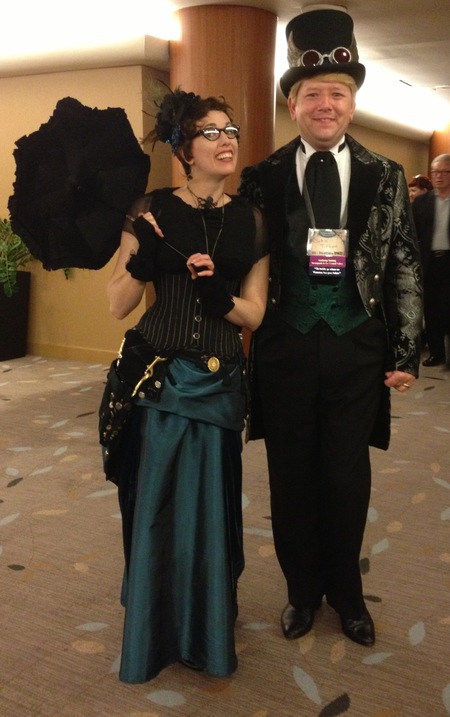
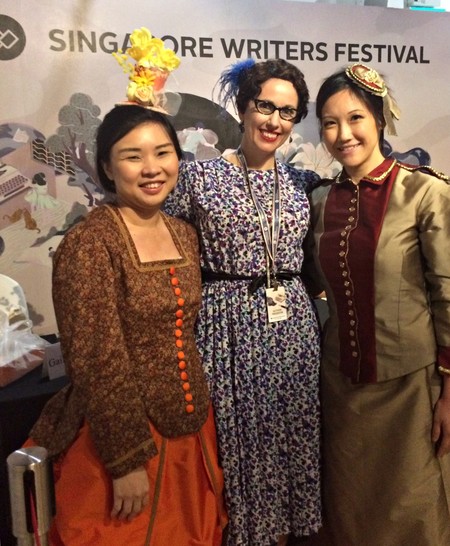
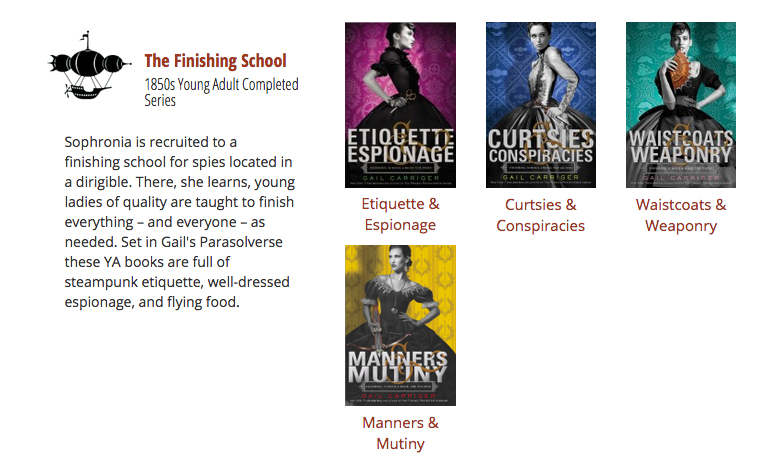
[…] Dialogue is Carriger’s favorite thing to write, and she visualizes her characters either talking on stage or on screen to each other. Carriger’s first draft of her manuscript actually tends to be dialogue heavy, so when she rewrites it, she fills it out with descriptions or narration. (Source) […]
[…] Blackgate interview with yours truly. […]